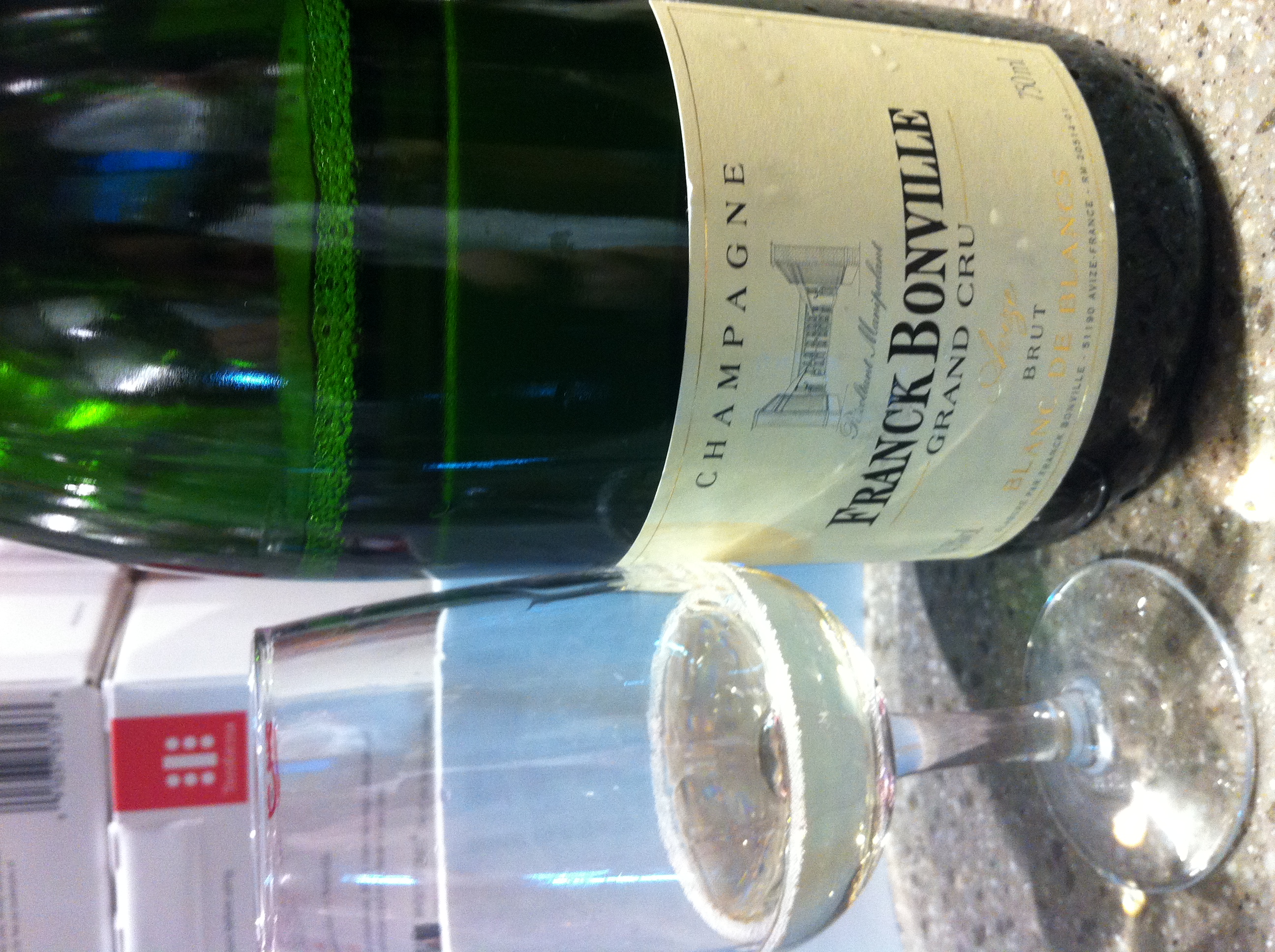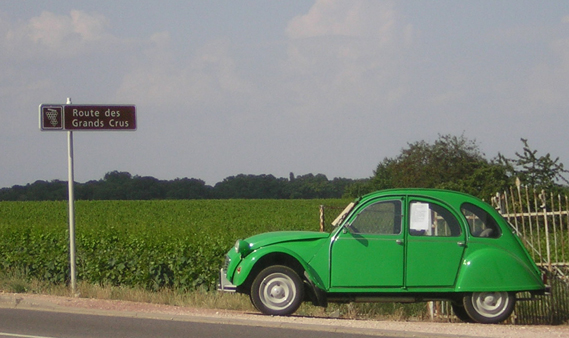|
Volnay, Côte-d'Or
Volnay () is a commune in the Côte-d'Or department in eastern France. In the middle of the Côte de Beaune, it is a well-known appellation of Burgundy wine. Population Wine In general, the wines are lighter than most other red Burgundies from the Côte-d'Or. 80,000 cases of red wine come from its 242ha of vineyards, of which 115ha is split among 26 Premier Crus. The most notable of these are Bousse d'Or, Champans, Clos des Chenes, Clos des Ducs, Les Caillerets, Santenots and Taille Pied. Red wine from the Santenots vineyard is classified as Volnay Santenots, whereas white wine from the same vineyard can call itself Meursault Premier Cru or Meursault Santenots. See also * Communes of the Côte-d'Or department * Burgundy wine * Route des Grands Crus * Côte de Beaune The Côte de Beaune area is the southern part of the Côte d'Or, the limestone ridge that is home to the great names of Burgundy wine. The Côte de Beaune starts between Nuits-Saint-Georges and Beaune, and ... [...More Info...] [...Related Items...] OR: [Wikipedia] [Google] [Baidu] |
Communes Of France
The () is a level of administrative division in the French Republic. French are analogous to civil townships and incorporated municipalities in the United States and Canada, ' in Germany, ' in Italy, or ' in Spain. The United Kingdom's equivalent are civil parishes, although some areas, particularly urban areas, are unparished. are based on historical geographic communities or villages and are vested with significant powers to manage the populations and land of the geographic area covered. The are the fourth-level administrative divisions of France. vary widely in size and area, from large sprawling cities with millions of inhabitants like Paris, to small hamlets with only a handful of inhabitants. typically are based on pre-existing villages and facilitate local governance. All have names, but not all named geographic areas or groups of people residing together are ( or ), the difference residing in the lack of administrative powers. Except for the municipal arrondi ... [...More Info...] [...Related Items...] OR: [Wikipedia] [Google] [Baidu] |
Communauté D'agglomération Beaune Côte Et Sud
Communauté d'agglomération Beaune Côte et Sud (also: ''Communauté d'agglomération Beaune-Chagny-Nolay'') is the ''communauté d'agglomération'', an intercommunal structure, centred on the town of Beaune. It is located in the Côte-d'Or and Saône-et-Loire departments, in the Bourgogne-Franche-Comté region, eastern France. Created in 2007, its seat is in Beaune.CA Beaune, Côte et Sud - Communauté Beaune-Chagny-Nolay (N° SIREN : 200006682) BANATIC. Retrieved 8 November 2022. Its area is 558.5 km2. Its population was 51,207 in 2019, of which 20,551 in Beaune proper. [...More Info...] [...Related Items...] OR: [Wikipedia] [Google] [Baidu] |
Côte-d'Or
Côte-d'Or (; literally, "Golden Slope") is a département in the Bourgogne-Franche-Comté region of Northeastern France. In 2019, it had a population of 534,124.Populations légales 2019: 21 Côte-d'Or INSEE Its prefecture is and subprefectures are and |
Departments Of France
In the administrative divisions of France, the department (french: département, ) is one of the three levels of government under the national level ("territorial collectivities"), between the administrative regions and the communes. Ninety-six departments are in metropolitan France, and five are overseas departments, which are also classified as overseas regions. Departments are further subdivided into 332 arrondissements, and these are divided into cantons. The last two levels of government have no autonomy; they are the basis of local organisation of police, fire departments and, sometimes, administration of elections. Each department is administered by an elected body called a departmental council ( ing. lur.. From 1800 to April 2015, these were called general councils ( ing. lur.. Each council has a president. Their main areas of responsibility include the management of a number of social and welfare allowances, of junior high school () buildings and technical staff, ... [...More Info...] [...Related Items...] OR: [Wikipedia] [Google] [Baidu] |
Côte De Beaune
The Côte de Beaune area is the southern part of the Côte d'Or, the limestone ridge that is home to the great names of Burgundy wine. The Côte de Beaune starts between Nuits-Saint-Georges and Beaune, and extends southwards for about 25 km to the river Dheune. The trend of producing red wines continues from the Côte de Nuits to the north, down through Beaune, although the wines become lighter and more perfumed. Farther south lie the great names of white Burgundy such as Meursault and Chassagne-Montrachet. The far south of the district sees a return to red wines in Santenay that continues across the Dheune into the Côte Chalonnaise. This mix of Pinot noir and Chardonnay grapes reflects geology in the southern Côte d'Or that is more variable than in the north. Appellations The Burgundy wine article explains the local classifications in more detail. Above the basic AOC Bourgogne lies Côte de Beaune Villages, a general appellation for wines from one or more of 16 villa ... [...More Info...] [...Related Items...] OR: [Wikipedia] [Google] [Baidu] |
Appellation
An appellation is a legally defined and protected geographical indication primarily used to identify where the grapes for a wine were grown, although other types of food often have appellations as well. Restrictions other than geographical boundaries, such as what grapes may be grown, maximum grape yields, alcohol level, and other quality factors may also apply before an appellation name may legally appear on a wine bottle label. The rules that govern appellations are dependent on the country in which the wine was produced. History The tradition of wine appellation is very old. The oldest references are to be found in the Bible, where ''wine of Samaria'', ''wine of Carmel'', ''wine of Jezreel'', or ''wine of Helbon'' are mentioned. This tradition of appellation continued throughout the Antiquity and the Middle Ages, though without any officially sanctioned rules. Historically, the world's first exclusive (protected) vineyard zone was introduced in Chianti, Italy in 1716 and th ... [...More Info...] [...Related Items...] OR: [Wikipedia] [Google] [Baidu] |
Burgundy Wine
Burgundy wine ( or ') is made in the Burgundy region of eastern France, in the valleys and slopes west of the Saône, a tributary of the Rhône. The most famous wines produced here, and those commonly referred to as "Burgundies," are dry red wines made from pinot noir grapes and white wines made from chardonnay grapes. Red and white wines are also made from other grape varieties, such as gamay and aligoté, respectively. Small amounts of rosé and sparkling wines are also produced in the region. Chardonnay-dominated Chablis and gamay-dominated Beaujolais are recognised as part of the Burgundy wine region, but wines from those subregions are usually referred to by their own names rather than as "Burgundy wines". Burgundy has a higher number of ' (AOCs) than any other French region, and is often seen as the most '-conscious of the French wine regions. The various Burgundy AOCs are classified from carefully delineated ' vineyards down to more non-specific regional appellations. ... [...More Info...] [...Related Items...] OR: [Wikipedia] [Google] [Baidu] |
Premier Cru
Cru is a wine term used to indicate a high-quality vineyard or group of vineyards. It is a French word which is traditionally translated as "growth", as is the past participle of the verb "croître" (to grow); it literally means 'grown'. The term is often used within classifications of French wine. By implication, a wine that displays (or is allowed to display) the name of its ''cru'' on its wine label is supposed to exhibit the typical characteristics of this ''cru''. The terms ''Premier Cru'' and ''Grand Cru'' designate levels of presumed quality that are variously defined in different wine regions. Premier cru ''Premier cru'' is a French language wine term corresponding to "first growth" and which can be used to refer to classified vineyards, wineries and wines, with different meanings in different wine regions:J. Robinson (ed.). ''The Oxford Companion to Wine'', Third Edition. p. 544. Oxford University Press, 2006. . * For Bordeaux wine, the term is applied to classified ... [...More Info...] [...Related Items...] OR: [Wikipedia] [Google] [Baidu] |
Communes Of The Côte-d'Or Department
The following is a list of the 698 Communes of France, communes of the Côte-d'Or Departments of France, department of France. The communes cooperate in the following Communes of France#Intercommunality, intercommunalities (as of 2020):BANATIC Périmètre des EPCI à fiscalité propre. Accessed 3 July 2020. *Dijon Métropole *Communauté d'agglomération Beaune Côte et Sud (partly) *Communauté de communes Auxonne Pontailler Val de Saône *Communauté de communes Forêts, Seine et Suzon *Communauté de communes de Gevrey-Chambertin et de Nuits-Saint-Georges *Communauté de communes Mirebellois et Fontenois *Communauté de communes du Montbardois *Communauté de communes Norge et Tille *Communauté de communes Ouche et Montagne *Communauté de communes du Pays Arnay Liernais *Communauté de communes ... [...More Info...] [...Related Items...] OR: [Wikipedia] [Google] [Baidu] |
Route Des Grands Crus
The Route des Grands Crus (roughly, "road of the great wines") is the name of a tourist route situated in Burgundy, France. The approximately 60-kilometre route runs along the foot of the Côte d'Or escarpment, from Dijon in the north to Santenay in the south. Thus it runs through many of the great appellations of Burgundy wine, hence the name of the route. It takes the visitor through the vineyards of the Côte de Nuits and the Côte de Beaune and the back hills ( Hautes-Côtes) behind and above the wine slopes. It is punctuated by 33 villages or little towns, including Beaune, many of which have picturesque churches. Route From north to south: * Marsannay-la-Côte * Côte de Nuits ** Fixin ** Gevrey-Chambertin ** Morey-Saint-Denis ** Chambolle-Musigny ** Vougeot ** Flagey-Echézeaux ** Vosne-Romanée ** Nuits-Saint-Georges * Côte de Beaune ** Aloxe-Corton ** Savigny-Lès-Beaune ** Beaune ** Pommard ** Volnay ** Meursault See also *French wine *Burgundy wine *Côte d ... [...More Info...] [...Related Items...] OR: [Wikipedia] [Google] [Baidu] |
Ensemble Santenay
Ensemble Santenay is an early music ensemble, originating in the Institute of Early Music in Trossingen, Germany. It was established in May 2004 by four musicians of four different nationalities specialising in their studies in the historically informed interpretation and performance of music from the 14th and 15th centuries, late Middle Ages and Early Renaissance. The formation of the ensemble using voice and instruments (copies of original instruments) perfectly suits the music of the Burgundian courts known as the Chansons Courtoises and reveals its poetical character along with its complex polyphony. Musicians * Julla Schmidt – voice, organetto * Elodie Wiemer – recorders * Szilárd Chereji – vielle The vielle is a European bowed stringed instrument used in the medieval period, similar to a modern violin but with a somewhat longer and deeper body, three to five gut strings, and a leaf-shaped pegbox with frontal tuning pegs, sometimes with a ... * Ori Harmelin ... [...More Info...] [...Related Items...] OR: [Wikipedia] [Google] [Baidu] |
Early Music
Early music generally comprises Medieval music (500–1400) and Renaissance music (1400–1600), but can also include Baroque music (1600–1750). Originating in Europe, early music is a broad musical era for the beginning of Western classical music. Terminology Interpretations of historical scope of "early music" vary. The original Academy of Ancient Music formed in 1726 defined "Ancient" music as works written by composers who lived before the end of the 16th century. Johannes Brahms and his contemporaries would have understood Early music to range from the High Renaissance and Baroque, while some scholars consider that Early music should include the music of ancient Greece or Rome before 500 AD (a period that is generally covered by the term Ancient music). Music critic Michael Kennedy excludes Baroque, defining Early music as "musical compositions from heearliest times up to and including music of heRenaissance period". Musicologist Thomas Forrest Kelly considers that the ... [...More Info...] [...Related Items...] OR: [Wikipedia] [Google] [Baidu] |



_-_WGA08174.jpg)